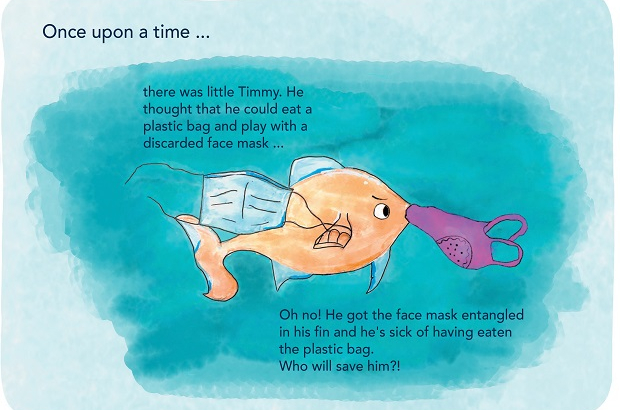- Daily & Weekly newsletters
- Buy & download The Bulletin
- Comment on our articles
Belgium’s youngsters respond to the climate emergency with creative and positive action
As world leaders met to discuss saving the planet from environmental disaster at the Cop26 climate summit in Scotland, it was impossible to ignore the contribution of youth activists to this defining global issue. In Belgium, as elsewhere, the younger generation are voicing their anger and fears about the danger of pollution and rising temperatures – and doing their bit to bring about change.
When the European Commission called on youngsters to help communicate the environmental impact of pollution, Bogaerts International School in Brussels didn’t hesitate. A group of enthusiastic students, guided by dedicated teachers, responded by creating the comic book 2030 Ocean’s Odyssey.
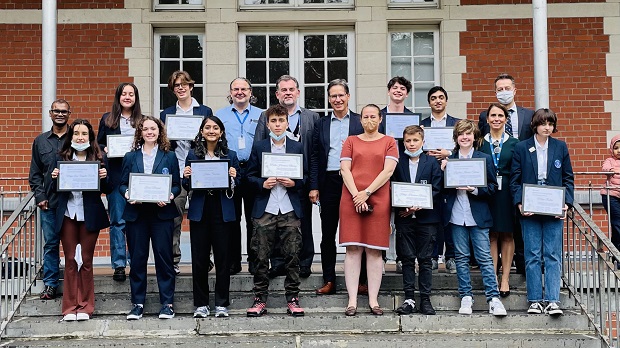
Inspired by the EU report Mission Starfish 2030: Restore our Oceans and Waters, the project started in October 2020. Over a long lockdown winter, the teenagers brainstormed, wrote and designed the booklet that was presented to the Commission in September 2021 (pictured above). It’s now being shared among the EU’s Blue Schools network, which teaches about a sustainable future for coastal areas.
2030 Ocean’s Odyssey combines storytelling, scientific research and hand-drawn artwork to tell the story of zebrafish Timmy (pictured), who dies after eating a plastic bag and becoming entangled in a face mask. His demise prompts Mother Earth to take humans and polluting companies to court, calling on witnesses from the aquatic world. Over 42 pages, the comic explores the threats to the world’s oceans. Interspersed by boxes with facts and diagrams, it explains how the water cycle is important for all marine and human life and how chemical pollution is destroying the sea bed.
A few months on, the school’s head of admissions and communications, Gloria Harrison, who instigated the project, joined teachers Hugh Burnett and Katherine Levy, and pupils Louise Binand, Asaad Dekelver and Pablo Harrison to reflect on the project. Fuelled by their success, now they’re transforming the comic into a musical, to be staged at Uccle Cultural Centre in May.
How did they translate a complex scientific text into a fun yet educational guide? The first task was to narrow the target age group to 13 to 15 to ensure the science would be comprehensive. “It had to address the mission, and the whole point was how do you get this science over to younger people so they understand it?” says English teacher Burnett. Louise, 16, chips in: “Thirteen- and 14-year-olds don’t want to be treated as kids, so the vocabulary couldn’t be too complicated or childish either.”
Fellow pupil Asaad, 15, shouldered some of the responsibility. “I did the science and worked with the creative writing team to work through the format we chose for the story.” Did he already know a lot about the subject? “Yes, I had an idea about it, but not a lot about oceans, which is what the starfish mission is all about.”
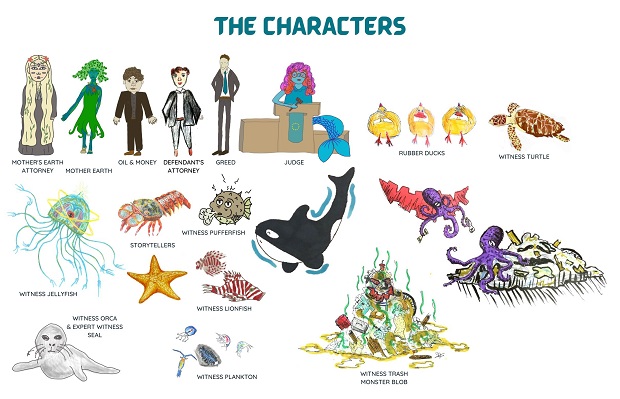
The students worked in three teams – creative, design and science – coming together to bounce ideas around. While some brainstorming sessions took place in the school canteen, many of the workshops were confined to after school. Burnett: “I remember long winter evenings on Zoom, my screen full of kids.” Louise also recalls the heavy workload: “I also had a lot of homework, but surprisingly it wasn’t stressful; I felt safe knowing that teachers knew what was going on.” Early on, the teachers realised they had to reverse roles with their students. “We had to consciously make a decision to step back,” says Burnett.
Throughout, Harrison coordinated the project, motivated by her roots in Murcia, Spain, known for its severely polluted coastline. Her sons, both pupils at the school, were involved in the project. “We needed characters to say things so we drew whatever sea animals we wanted,” says 15-year-old Pablo, who did some of the artwork. One of the many positive results was the relationships the project created between students who previously didn’t know each other. “I was new last year. I know everyone now,” says Louise, who headed the creative team and was responsible for the final presentation to the Commission.
The ambition to turn it into a musical came from Harrison. “I wanted to give the comic one more push; I didn’t want it to be lost,” she says. Music teacher Katharine Levy has incorporated the project into her lessons. “It started as a play without music and then Louise wrote the script, which is amazing,” she says. “Some of the songs that have come out have been genuinely good.”
The story has also taken on its own life in the musical, with some characters given a greater role than in the book. One promoted character is Timmy, whose early death sparks the tribunal at the heart of the book. “The students really connected with him, so we have a song called We Will Fight for Timmy and this flows through the whole story,” says Levy, who has been impressed by the students’ passion. “You need to balance the emotion with the storyline and the science while getting the environmental message across,” she adds.
The reason for this passion is their commitment to protecting the environment, with the school undertaking a number of awareness-raising initiatives. Asaad discusses the issue with his brother, who has attended climate protests, while Pablo and his family (his father is a marine biologist) are all active in anti-pollution and ecological causes. Louise has been inspired by “super eco-friendly” family friends and says her family is cutting down on single-use plastics and drinking tap water rather than bottled. Having lived in Asia, she’s seen first-hand how challenging it can be to reduce plastic use. She’s also reflecting on her future life at university and how to kit herself out with reusable and sturdy items.
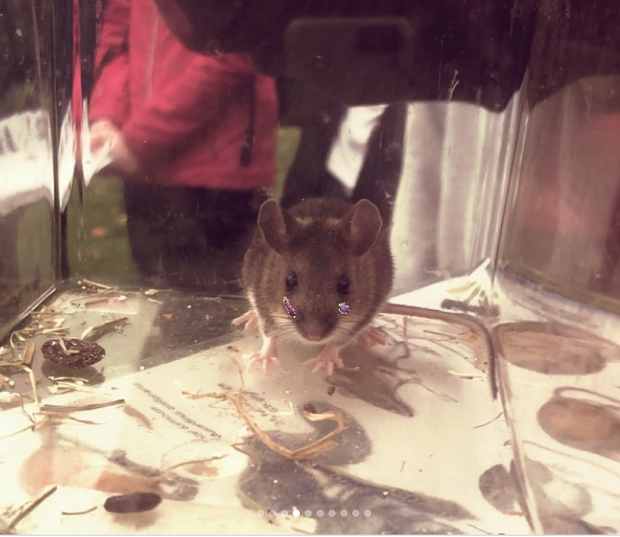
Activism by younger members of St Paul’s congregation
Ocean’s Odyssey is not the only project where young people in the Brussels community are engaging with the environment. At St Paul’s Anglican church in Tervuren, chaplain Dominic Newstead is impressed by the engagement of younger members of his congregation and their commitment to changing their own lives and influencing those around them. “Not only are they making the decision to go vegetarian to do what they can to address the carbon issues that come from cattle and other kinds of farming, they are thinking of ways they can help others to consider doing this,” he says. These methods include school projects (pictured above), talking to other church members and producing a book of their favourite vegetarian recipes. Newstead: “They’re also encouraging people to try ‘no-meat Mondays’ as a first step, and the next church event will be with vegetarian food only.”
One youngster, Abigail, has helped set up a student-teacher sustainability committee at her school. “They’ve addressed the availability of recycling bins in student areas, and had vegetarian days when all the food served is vegetarian,” he says. “They’re also asking everyone to wear second-hand or charity shop-bought clothes to the next school social.”
The church has partnered with Christian environmental charity A Rocha, with one teenager carrying out a two-month placement to help their environmental research, saying: “I’m learning about the positive and negative effects of human activity on the natural world and how we can reverse the negative impacts of human activity.” Two others plan on specialising in the subject at university. “I would like to study an environmental science and management course because I want to understand nature and the environment better so I can discover ways I can help reverse the effects of human activity on nature,” says one.
In November, finally, the church organised a Climate Change Escape Room with its teenage congregation, inviting other community groups to attend. Newstead: “It was a family event that was great fun but that also helps families think and talk about climate change, as often young people aren’t given opportunities to talk about how important an issue it is for them.”
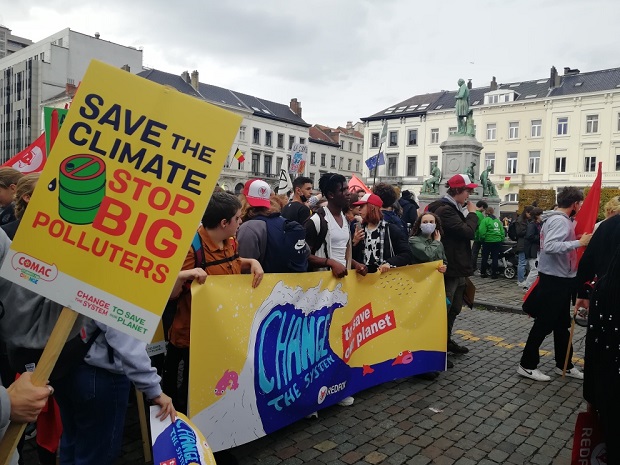 Voices of the protest
Voices of the protest
While leaders met in Glasgow, young people took to the streets around the world. We spoke to some activists at the Rise for Climate Belgium demonstration that took place in Brussels (pictured above).
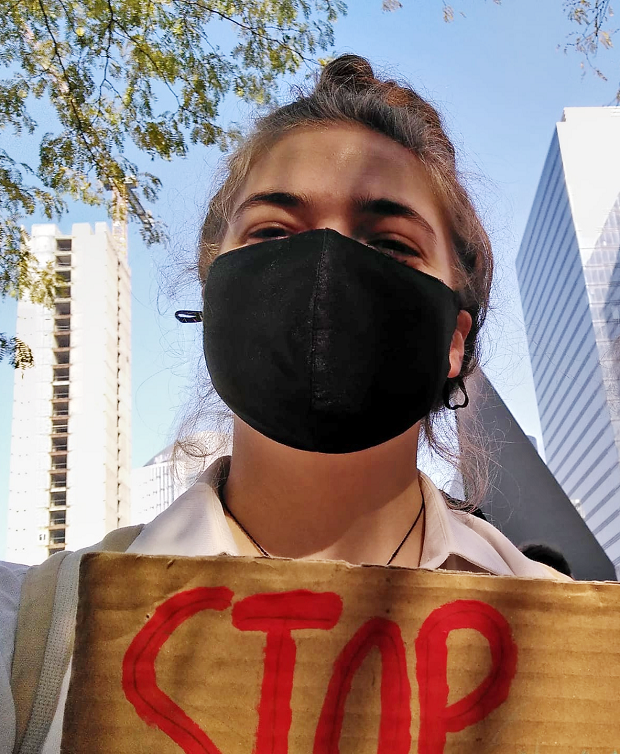
Mona Ombelets, 18 (pictured above): “We know the conclusions that come from the conference in Glasgow literally determine our future. It’s literally a question of life or death for us and future generations. As a family, we work together, with different initiatives to keep making changes that lead to a more sustainable lifestyle. Great sustainable habits that last have a way bigger impact than being a super-green family for one day and then giving up the next day.”
Daniela Arturo, 23: “We, the young people, are the ones who will inherit the world. We will have to think about our future, and what’s going to happen to us in 20 years’ time.”
Anouchka Lamertz, 28: “My motivation is the realisation that the way we eat, drive, shop is really problematic, so I decided to switch a few things in my personal life. It’s about what you do in your private life, making small changes that are easy to do, not asking people to switch from one day to another, but maybe walking instead of taking the car sometimes.”
Paul Monier, Youth for Climate Belgium: “We cooperate with other organisations in Belgium, we give information to a lot of people and we also want to shock the politicians in some way to make them change things.”
Maya Scarcelli, Youth for Climate Belgium: “If everybody does a little thing then maybe the bigger organisations will hear us and that’s why I’m here today.”
This article was first published in the Expat Time magazine, winter 2021-22












